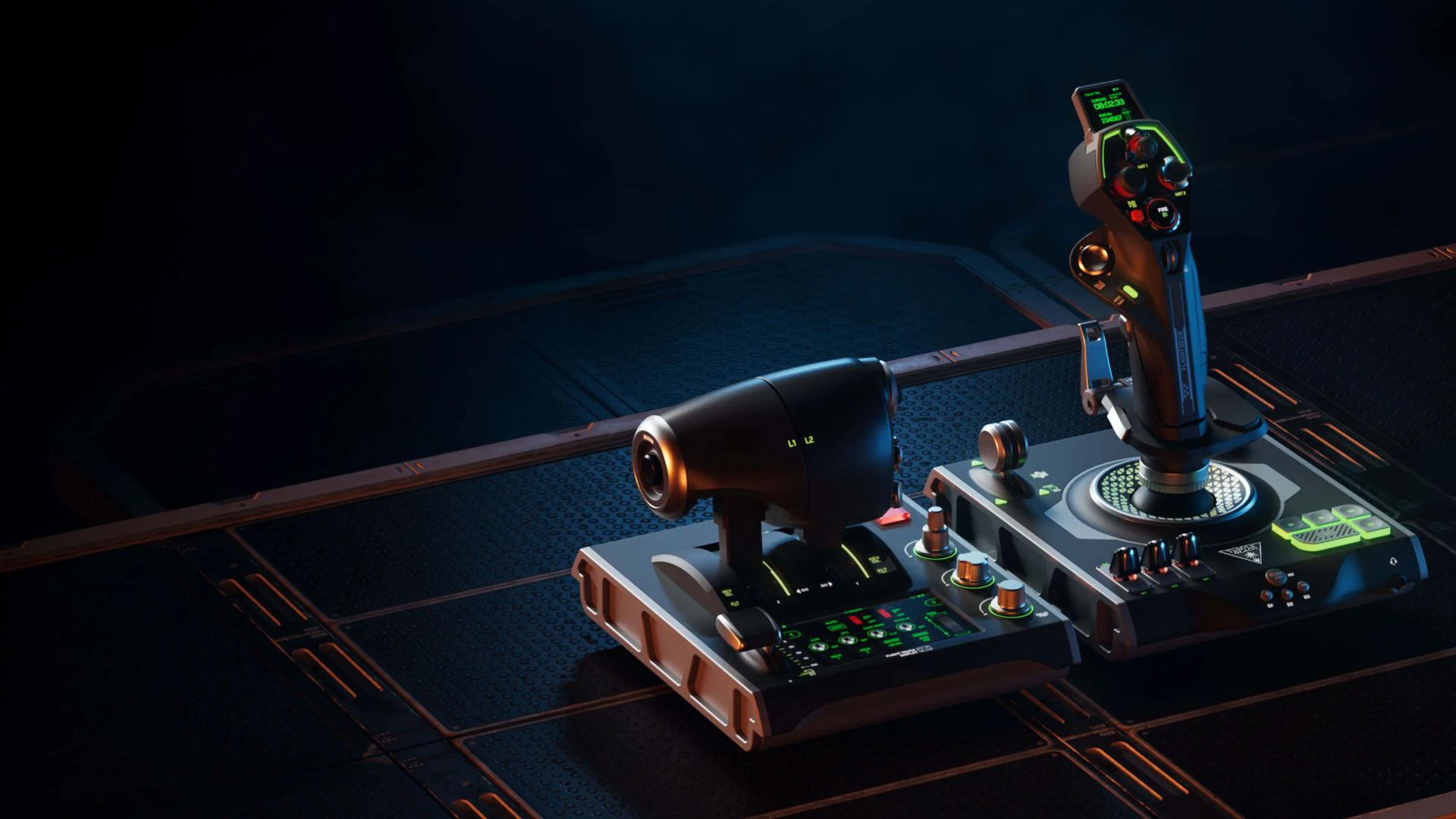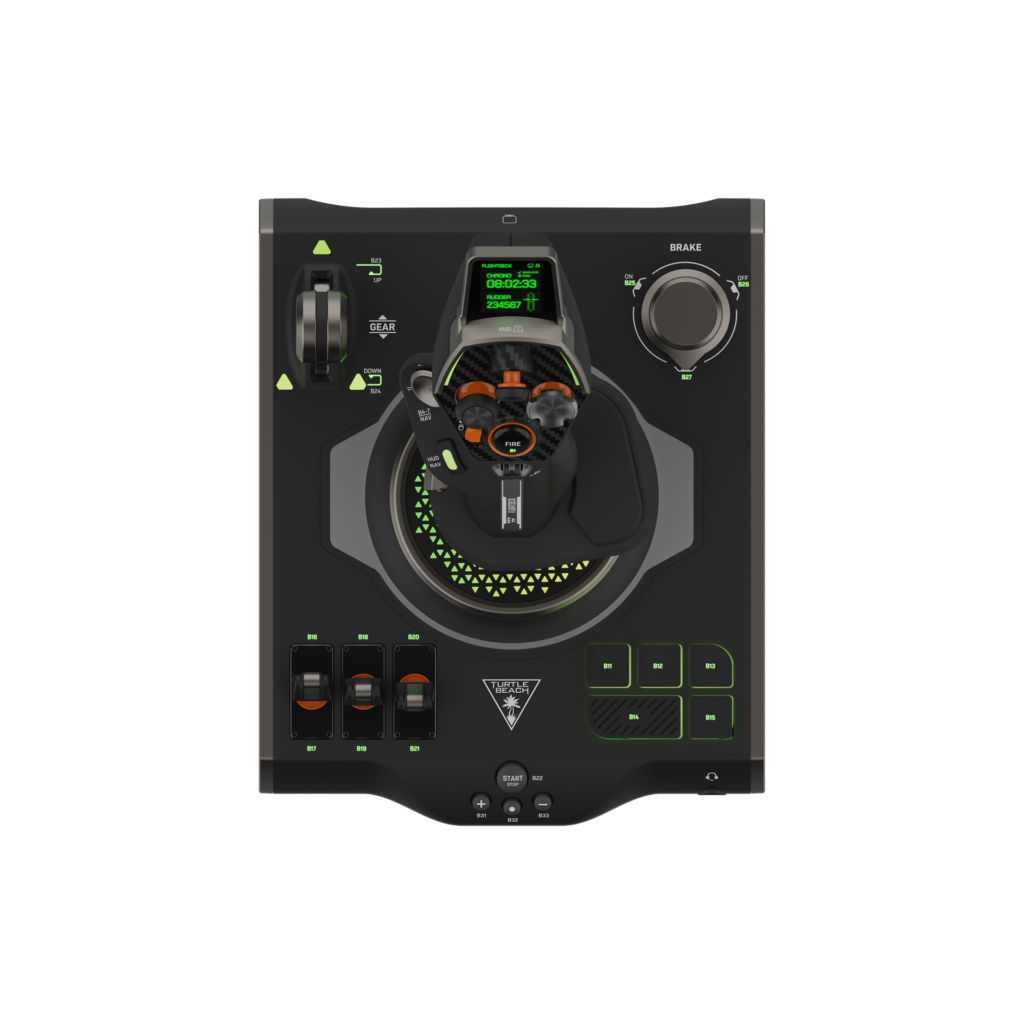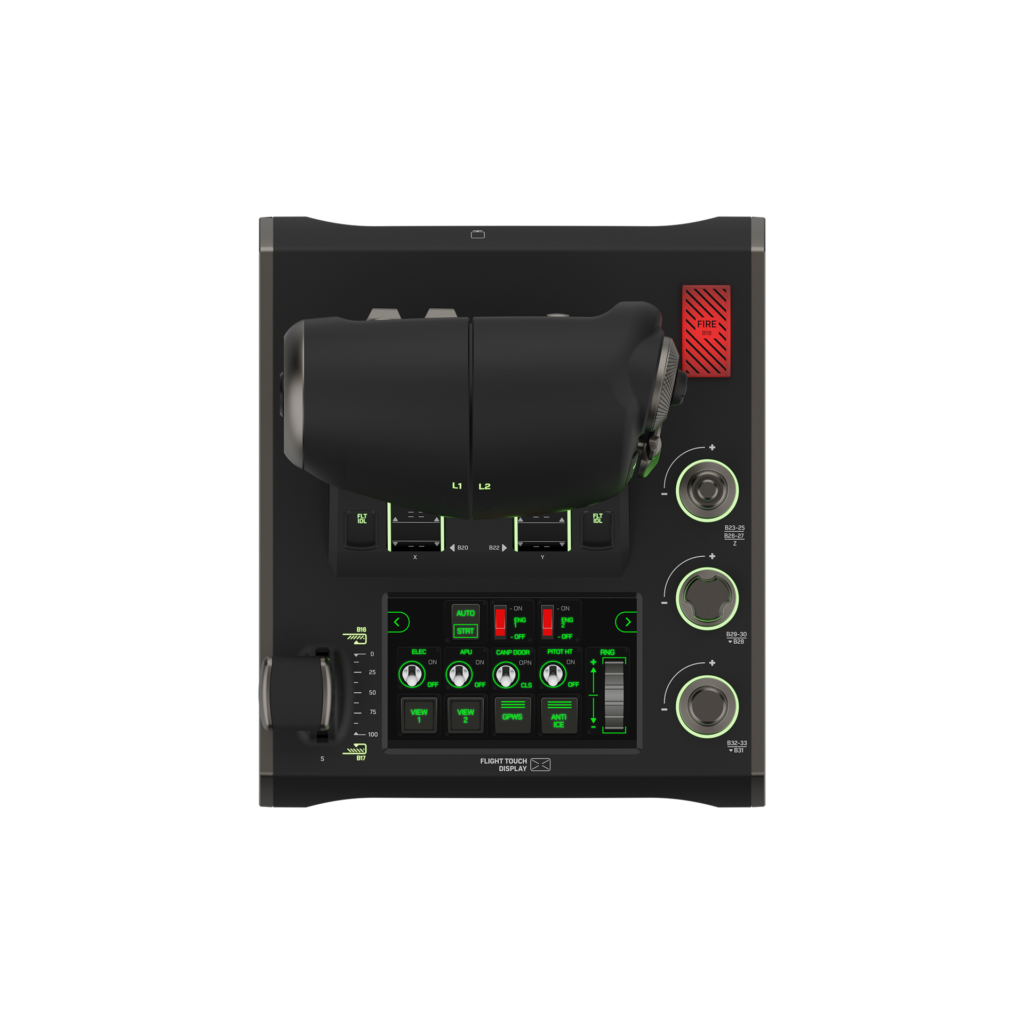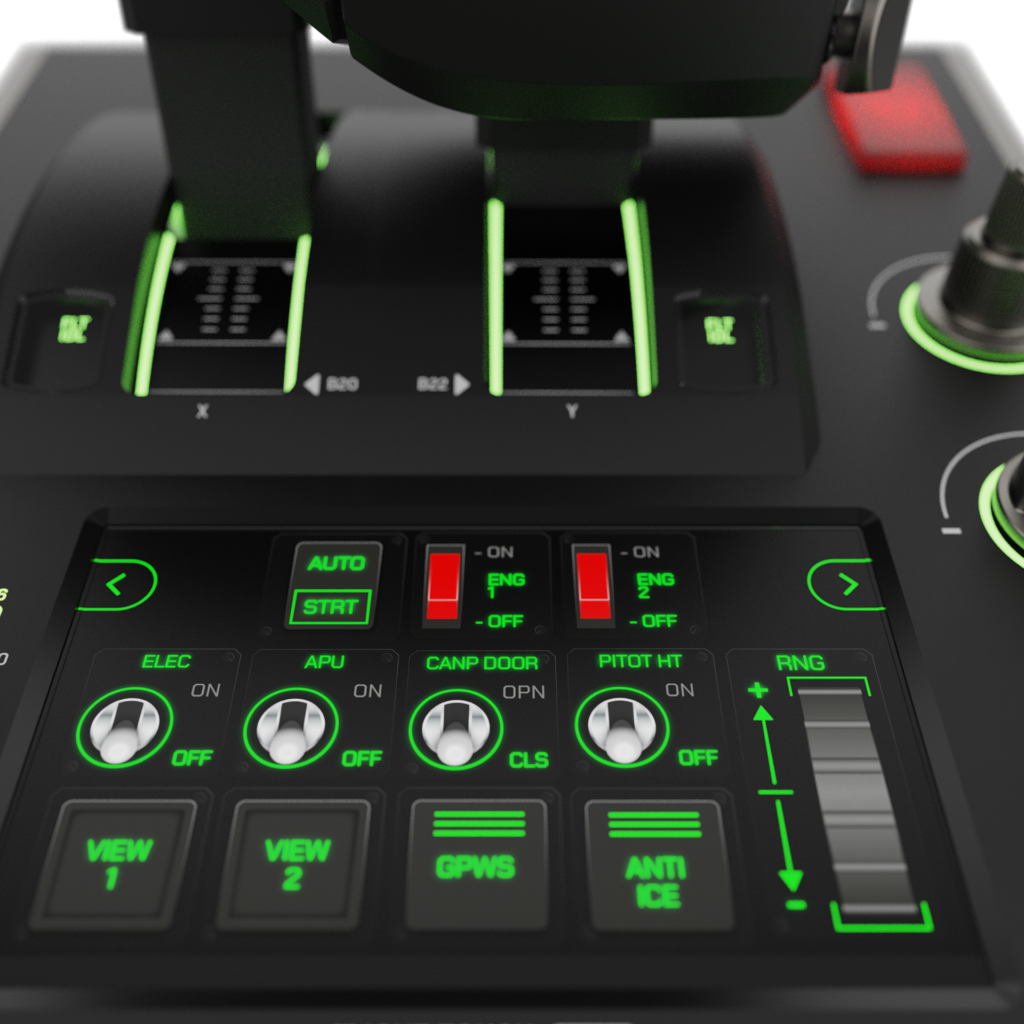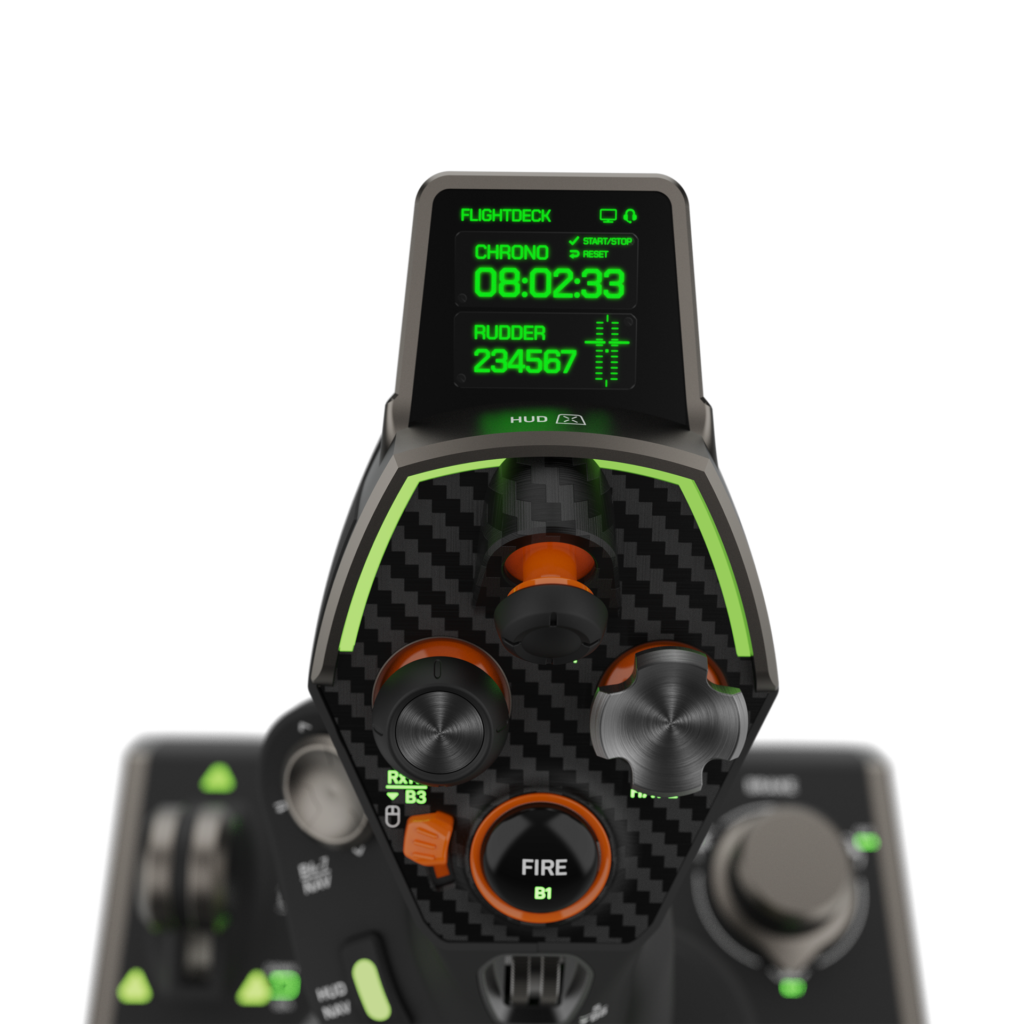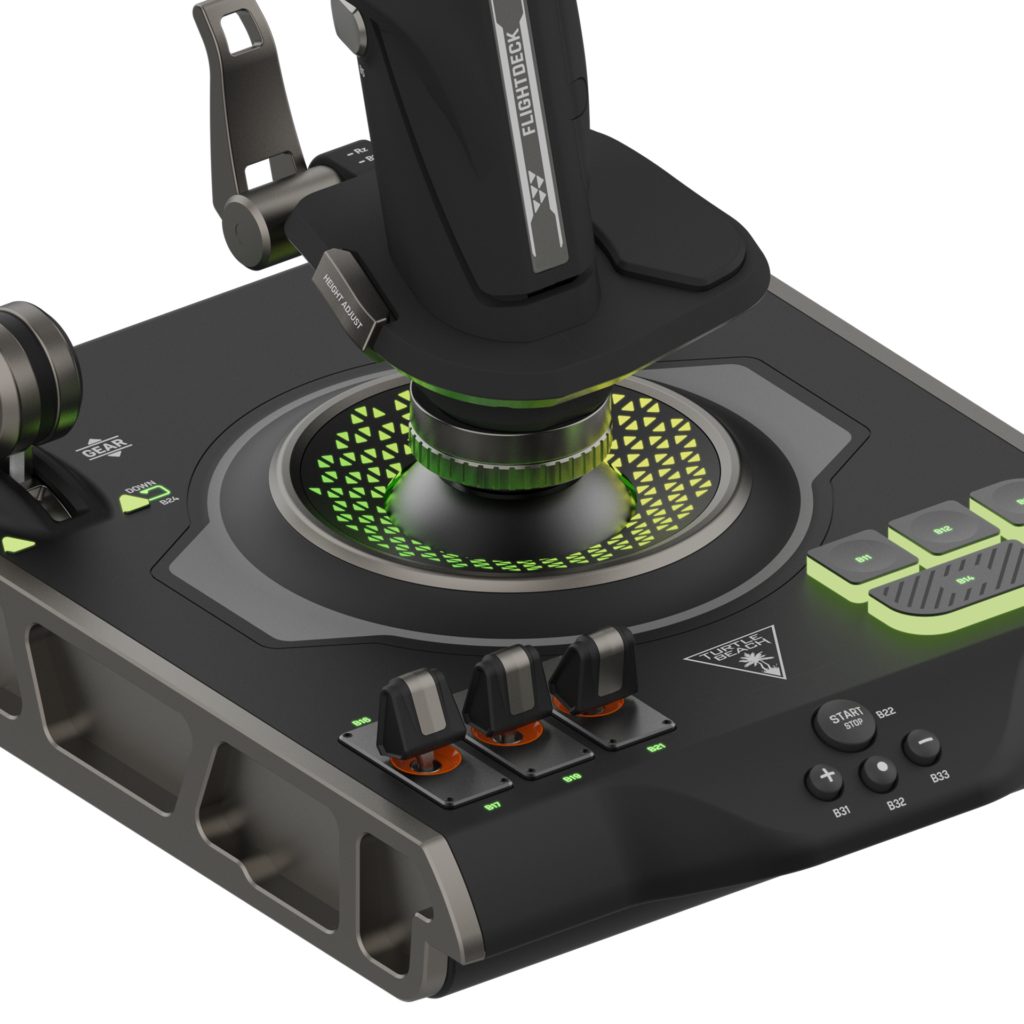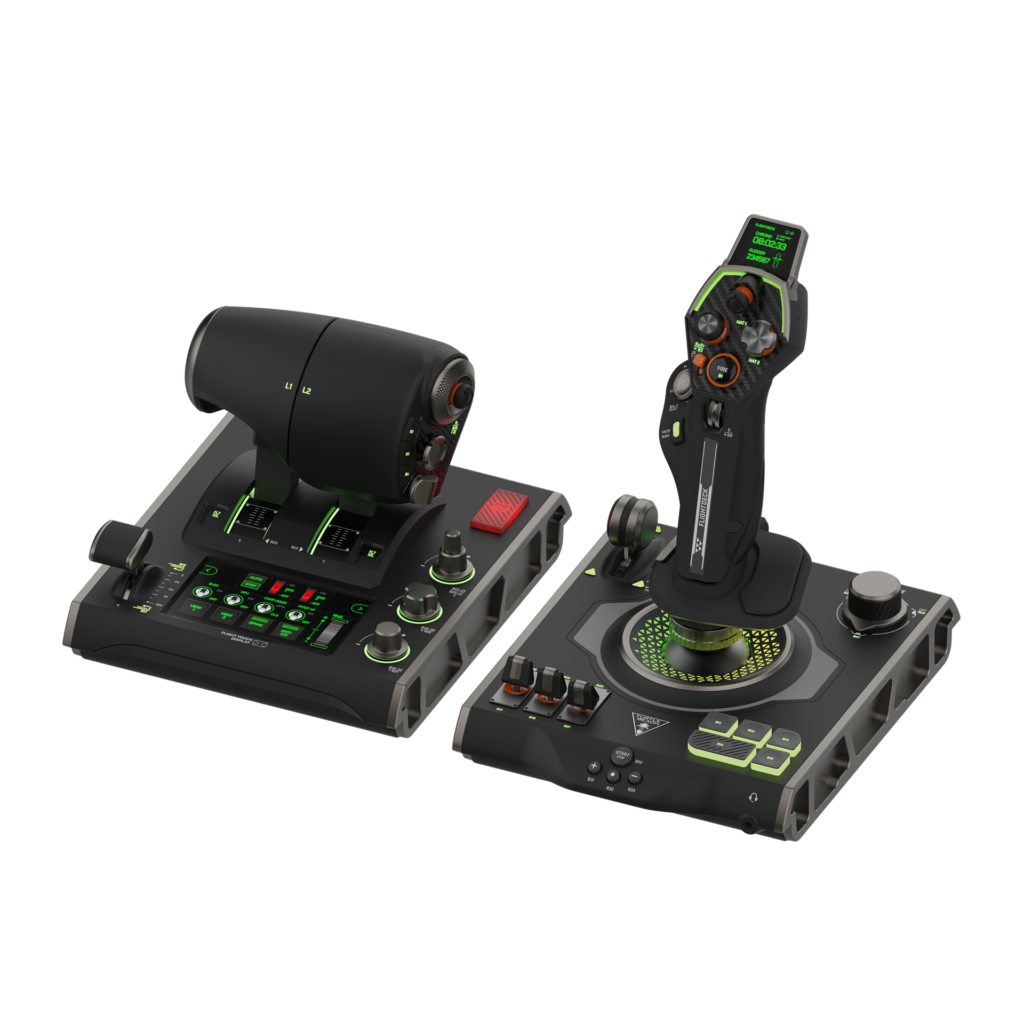By name alone, you might be thinking this is once again my review of the VelocityOne Flightstick, but satisfyingly, the VelocityOne Flightdeck is so much more than what came before it. First and foremost, this is designed for PC only, and won’t work on Xbox or other consoles. Secondly, this is for enthusiasts of flight, combat, and space sims; Turtle Beach calls this an “expert-level device”. Now, I can’t reasonably have experience with every single HOTAS (Hands-On Throttle And Stick) out there, but have used many. what I do know, is that this is Turtle Beach’s best flight apparatus yet, and the VelocityOne Flightdeck should not be overlooked.
When you’re unboxing this thing, it feels like you’re getting military hardware with all the black and green adorning the retail packaging. In contrast to the VelocityOne Flightstick that I reviewed, the Flightdeck does require some assembly. It comes in three pieces, and is very heavy duty in what I think is great material. Turtle Beach touts the hall-effect sensors in its joystick. It also comes with mounting screws, so you know it is serious business and for serious simmers. The joystick’s design is modeled after sixth generation fighters, and is clear that it is not ambidextrous or swappable like my Thrustmaster T.16000M, so it doesn’t support left-hand mode. Upon connecting all the USB cables and finding the Windows app (more on that later), I got temporarily stuck. The Flightdeck would just constantly rumble (more on that later, too). After consulting online documentation from Turtle Beach, I need to fix this with resetting the boot load order. Once that was done, the rumbling stopped and everything was operational.
Seeing everything powered up, is a sight to behold. There’s dozens of glowing buttons, and two OLED screens: one at the top of flight stick and another in the base of the throttle, both with touch functionality. The latter is a touch-screen that gives you multiple pages of toggles and switches to utilize in flight. The throttle even has a button to release each lever to be operated independently for a “crazy ivan” (link). The throttle base also has a cool red, warning accented ‘FIRE’ button that can be used to drop bombs or use an extinguisher if you happen to get a flame-out. One thing that I kept forgetting that existed on the joystick was a rotating button that would be used for brakes. The joystick is so large, that it was out-of-sight, out-of-mind and that’s not the case because brakes are kind of a big deal when taking off and landing. All-in-all, it’s a visual treat that simply looks expensive, but gives you a lot to work with – even if that is a bit overwhelming.
I’m going to allow you time to groan, because there’s a Turtle Beach app to install… You good? Alright, let’s continue.
I’ll say this about it, it’s rather noninvasive and it’s not a large download. I just find it odd that I’d have to install another bespoke Windows app, this time called ‘Turtle Beach VelocityOne Flight Hangar’. It’s a robust piece of software. Here you’ll be able to update the firmware on both pieces, configure the RGB lighting to your liking, and enable basic profiles for flight sims, air combat, and space games. The app does not have to be open while playing games, either. While you’re able to copy these basic profiles, it provides an ideal color scheme and button layout for the touch screens. It won’t auto-configure the controls for the game you’re about to play.
Turtle Beach notes different facets of support for games. Microsoft Flight Simulator, X-Plane 11 & X-Plane 12 is noted to have full support with profile selection. DCS World, Prepar3D, and Elite Dangerous have full support. Then games like Star Wars Squadrons and War Thunder have basic support. In practice, let’s see how the games I have and tested fared:
Aerofly FS4, DCS World, and X4 Foundations all required a full configuration in order to get off the ground (or launchpad). Now, truth be told, many flight sim enthusiasts will prefer this. They’ve either had years or decades of a particular configuration, and will enjoy the pure customization elements to have it exactly the way they’re used to. To others, this will be rather frustrating experience to setup game over game.
Both X-Plane 11 and X-Plane 12 needed some slight hand-holding to get going, but I was able to get flying in under ten minutes with some quick adjustments.
Lastly, Microsoft Flight Simulator (2020) is the smoothest and easiest, immediately applying a profile and you’re able to fly as fast as you’re able to navigate the menus and load into a scenario or airport. It is by far the most polished and accessible way to play.
Editor’s Note: Here is Turtle Beach’s suggestions for mapping buttons in games that don’t have profile support: https://support.turtlebeach.com/s/article/VelocityOne-Flightdeck-Suggested-Button-Mappings-For-Microsoft-Flight-Sim-2020-MSFS2020-Stick-Module?language=en_US
This hardware is really impressive, as there’s 49 programmable functions to include toggles, switches, and dials. In total, there’s a staggering 139 programmable buttons when you consider the touch pad and everything else. There’s really too many options, and buttons, but never a shortage of configuration and choice. You can adjust the main stick’s sensitivity to dial-in on your ideal target acquisition sensitivity. And so to can the throttle, it can be programmed to activate certain situations at various stages.
While using the Flightdeck, I never pushed or pulled so hard that either the throttle or stick base rose into the air. This is a weighty HOTAS, and it proves itself consistently. One oddity is that this doesn’t have Force Feedback. Despite the fact that it rumbled incessantly when it was improperly connected, the lack of force feedback in games is a slight break of immersion, but is also true for Turtle Beach’s VelocityOne Flightstick.
Now, RGB lighting is something people either love or hate. But you can argue with its inclusion here, or the necessity that drives as part of the design. In real life, when flying night missions or taking passengers across a country, each button and switch needs to be illuminated for quick identification and actuation. And so this translates into gaming rather perfectly. You have control of changing multiple zones of lighting, and evoking a night vision look, a stealth bomber red, or an amber sci-fi vibe. The choices are yours, but the future looks bright.
Because this is a Turtle Beach device, if you connect any 3.5mm headset into it, you’ll be able to take advantage of their excellent sound profiles, to even include their trademarked Superhuman Hearing mode and other equalizer settings. If you’re in Microsoft Flight Simulator with friends, you can use it to balance game and chat audio to your preference. It’s one of those “it does need to go this hard, but I’m very glad it does” type of scenarios. It seems Turtle Beach spares no expense (link) when it came to this peripheral, and it shows.
While the VelocityOne Flightdeck is not as plug-n-play as maybe it could be, it does offer an unprecedented amount of customization. Furthermore, this is designed for the hardcore flight sim enthusiast on PC, so the price point feels deserved for what you’re getting from its build quality to exorbitant amount of buttons. There’s great support across many titles, but Microsoft Flight Simulator benefits the most and works flawlessly today, where others needs some work. If the VelocityOne Flightstick was the prime rib of HOTAS devices, then the VelocityOne Flightdeck is the filet mignon – it’s absolutely fine dining at 30,000 feet.
A VelocityOne Fightdeck was provided by Turtle Beach for review purposes
